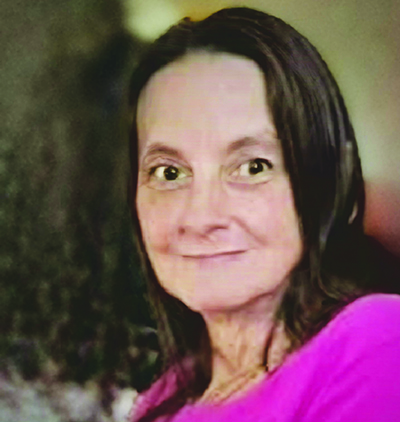The Literary Corner: Renegade Writer’s Guild
Published 11:33 am Tuesday, July 8, 2025

- Danny and Eva Casstevens provided the period music for an open house at the Richmond Hill Pearson Law School in East Bend.
|
Getting your Trinity Audio player ready...
|
Hard Times
Come Again No More
By E. Bishop
The title comes from an old Civil War tune.
This, along with My Darling Nellie (a story of a slave woman being sold away from her family), The Southern Soldier Boy and several others from this period in our history were performed by Danny and Eva Casstevens on the grounds of the Richmond Hill Law School in East Bend on a lovely Saturday afternoon in June. These authentic emotional tunes of the Civil War period tell tales of sadness and separation and hope of a better tomorrow. We could all benefit from keeping history alive and visiting events and places such as this one.
My feeling is that one of the incorporators of the North Carolina Historical Society, Richmond Mumford Pearson (1805-1878), thought this was a good idea early on (keeping history alive). In his last session of the legislature, an act was passed for the incorporation of such. Luck has it that the Pearson’s family home built in 1860 was fully restored in the 1970s and is the centerpiece of the 30 acre Richmond Hill Law School and Nature Park in East Bend. It is listed on the National Register of Historic Places and is on the Yadkin County seal.
Were it not for wanting to move away to get out of the big city, Richmond Pearson may have planted his law school in our own Davie County. In the brief summary of the Career of Chief Justice Richmond Mumford Pearson, it is stated that he was born at what is now Cooleemee, Davie County, NC, the son of Richmond Pearson, wealthy merchant and entrepreneur, owner of land and grist mills. The young Pearson graduated with honor from the University of North Carolina in 1823 and studied law at Williamsboro in present day Vance County.
Pearson was admitted to the bar in 1829, began a successful practice in Salisbury, then moved to Mocksville. He moved from Mocksville about 1846 to his Yadkin County home, Richmond Hill where he would live for the rest of his life. He ran for Congress unsuccessfully, was elected as a judge of the Superior Court in 1837, was elected Associate Justice of the Supreme Court in 1848 (for 10 years) and was chosen Chief Justice by his associates on the court.
He had a firm belief in the rule of law and in the freedom of the individual. His fundamental principle was the Latin motto, “Fiat justitia, ruat coelum” (“Let justice be done though the heavens fall”).
Also of note in this brief summary, reconstruction after the Civil War, Pearson declined a motion to call out the manpower (the posse comitatus) of the county to seize and free detained persons for which he was threatened with impeachment. Take note – does history repeat itself?
This man’s lasting legacy could be in that he taught possibly over a thousand lawyers (according to him) in a span of his thirty years at Richmond Hill. Many of his students distinguished themselves as governors, congressman and judges. Among these were six state Supreme Court judges, two of whom became Chief Justices. Pearson died in January, 1878, on his way from Richmond Hill to Raleigh for the next term of the Supreme Court. His burial was in Oakwood Cemetery in Raleigh.
There is much more history to learn from the James Albert Hutchens (1999) Summary of Chief Justice Richmond Mumford Pearson and from actually visiting the site. Period dressed docents like Michelle and others can take you back in time as did Eva and Danny singing their woeful tunes under the black walnut and hickory trees surrounding this historical home. To learn more, check out their Facebook page, Instagram (@richmond hill) or email historicrichmond@gmail.com. Keep history alive. Next event is July 12th, open house 1:00 to 4:00 “NC Governor Zebulon Vance vs Chief Justice Richmond Pearson” with Greg Cheek.
July 4th
By Linda H.Barnette
In 1776 delegates from the colonies, except for Georgia, gathered in Philadelphia to decide what they could do in response to the actions of Great Britian towards the colonies, things such as the Stamp Act and other things that the colonies thought were unfair, thus the taxation without representation that we have all read about. The consensus of the delegates was that the colonies should separate themselves from the mother country.
Thus, Thomas Jefferson wrote the Declaration of Independence, the document that declared that the colonies were now free from Great Britain. The delegates actually voted in favor of freedom on July 2, 1776, but it was on July 4th that the delegates began signing the document .There are 56 signatures, including the one of John Hancock, which was signed with large letters, thus leading to the popular saying to “put your John Hancock here.”
It was the idea of John Adams, the president from 1797-1801, to celebrate the freedom of our country each year on July 2, which was the date of the actual vote for independence. He wanted celebrations with fireworks an d parades.
However, if you have always wondered why people celebrate the 4h with fireworks, that tradition went back to 1777 when there were huge celebrations in both Boston and Philadelphia. Cannons in Philadelphia fired 13 times to represent the 13 colonies and in Boston the Sons of Liberty put on a fireworks show.
In 1870 the 4th was designated as a federal holiday, and in 1941 it became a paid federal holiday.
Now people continue to celebrate with parades, fireworks, and cookouts.
Good Conversations – Mouth Shut, Mind Open
By Felicia Browell
I’m taking classes this summer, one of which is in communications. I dreaded this class, because I thought it meant giving speeches or writing something about mass media. But it isn’t public speaking or journalism. It’s about how to understand others, about body language, assumptions, relationships, and more. This is a some of the great advice from one of the homework assignments – a 2015 TED Talk by Celeste Headlee – 11 minutes and 29 seconds I’ve watched four times already today.
You’ve had great conversations before – those where you know that you’ve been heard and understood, where you feel that you made a great connection with an interesting person. The old advice of looking the other person in the eye when they speak is barely important. If you are truly paying attention, you don’t need to focus on nodding and smiling, or repeating back what you heard. This advice still stands today, and is perhaps more important than ever.
First, don’t multitask – pay attention! Don’t plan your drive home, itemize your shopping list, or try to figure out where you left your cell phone if it’s not already in your hand. Be in the moment, and actually listen to what the other person is saying.
Don’t pontificate. That is, don’t use the conversation to state your opinion without discussion. If you want to do that, you can go online and write a blog, or maybe a letter to the editor of this paper!
Enter every conversation with the assumption that you have something to learn. It could be eye-opening information, or it could be that you don’t want to talk to this person again, but you can learn something. Set aside your own opinions and understand that everyone is an expert at something, and perhaps the person in front of you knows something you don’t.
To engage the other person, start your questions with one of the five W’s and one H – who, what, when, where, why, and how. Instead of “were you glad?” ask “how did you feel?” and let them describe it. Instead of “did you build that?” ask “How did you build that?”
If you think of a comment or question while the other person is answering one of your question, let it go. Chances are they will answer it anyway, or it is just better to let the conversation flow instead of circling back to something they might already have answered. This is part of active listening, which means don’t plan your response while the other person is talking because that means you just stopped listening.
If you don’t know the answer to something, say that you don’t know. Most people have good BS meters, and they’ll know if you are not being real with them.
Don’t equate your experience with theirs. If they are talking about their recent accident or the dog that just crossed the rainbow bridge, don’t start talking about an accident you had that is similar, or when you lost your fifth cat. It is never the same – all experiences are individual. Remember, the most important person in the conversation is the other person. When practicing good conversation skills, it’s really about the other person, not about you.
Don’t repeat yourself – it won’t help to keep saying the same thing over and over. And don’t restate the same point in a different way. No one likes to be verbally beaten about the ears; they heard you the first three times. It’s boring and annoying.
Minimize the details when answering a question – the dates, names, colors, etc. Those aren’t usually important and most people don’t care about the excruciating details. They care about you, and how you feel about what you are saying or what happened.
LISTEN. Listening is the single most important skill you can practice and master. It is also one of the least practiced in today’s world of screen-time, texting, tweeting, and Facebook. If you’re talking, you’re not listening.
And last, for your part of the conversation, be brief.
We’ve all done some of these Do’s and Don’ts, and we certainly know people who have. Pick a couple and try them the next time you chat with someone face to face. You might be surprised at how they respond, and you just might learn something new or gain a new friend.
Now, moving on to my other homework!




